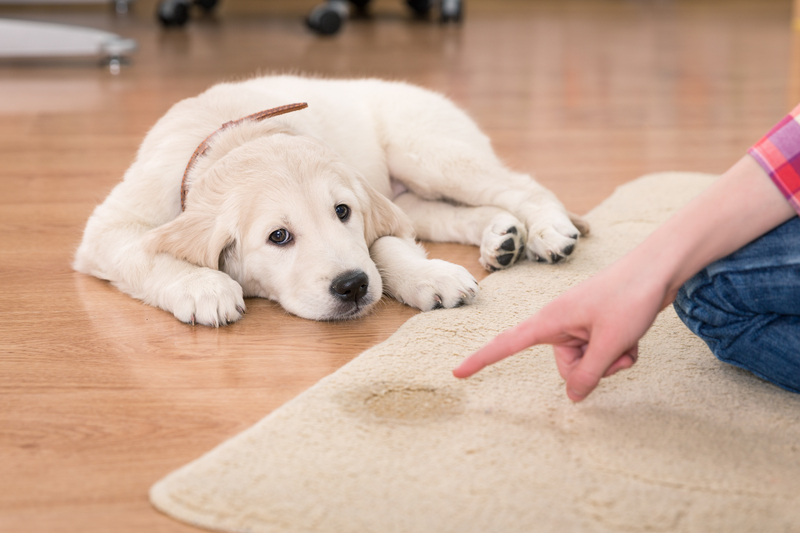Achieving Serenity: A Practical Guide to Dust and Allergen Control
Posted on 29/08/2025
Achieving Serenity: A Practical Guide to Dust and Allergen Control
In today's fast-paced world, finding peace and serenity at home is essential for wellbeing. However, many households struggle with persistent dust and allergens that can disrupt tranquility and impact health. This comprehensive guide will empower you with practical tips, techniques, and strategies for mastering dust and allergen control in any living space.
Why Is Dust and Allergen Control So Important?
Invisible threats like dust mites, pollen, pet dander, and mold spores often lurk in the air and on surfaces, triggering allergy symptoms, asthma, and even long-term respiratory problems. Effective dust and allergen management not only improves the cleanliness and appearance of your home--it enhances physical comfort, sleep quality, and peace of mind for you and your loved ones.
Key Health Benefits of a Dust-Free, Allergen-Reduced Home
- Reduced allergy and asthma symptoms: Minimized sneezing, coughing, and congestion.
- Improved sleep quality: Breathing easier throughout the night leads to better rest.
- Fewer illnesses: Lower risk of respiratory infections and chronic conditions.
- Greater peace of mind: A cleaner environment supports tranquility and emotional wellbeing.

Understanding the Main Sources of Dust and Allergens
Before you can achieve full serenity by controlling allergens, it's helpful to recognize the primary culprits in your living space:
- Household dust: A mix of dead skin cells, fibers, soil, hair, and minute debris.
- Dust mites: Microscopic insects that thrive in fabrics and bedding, feeding on skin flakes.
- Pet dander: Tiny flakes of animal skin, fur, and saliva spread through the air and on surfaces.
- Pollen: Seasonal outdoor particles that enter homes through windows, doors, and on clothing.
- Mold spores: Released by mold growing in moist, poorly ventilated spaces.
- Cockroach droppings: A potent allergen found especially in urban dwellings.
Hidden Dust Collectors You Might Overlook
Items like bookshelves, lampshades, blinds, stuffed toys, and under-furniture spaces are often missed during routine cleaning. These can harbor significant allergens if not regularly addressed.
Practical Strategies for Dust and Allergen Control
The path to home serenity starts with a consistent and thorough routine. Below are proven techniques and actionable tips that can transform your indoor environment.
1. Adopt a Strategic Cleaning Routine
- Dust often--using the right tools: Microfiber cloths and electrostatic dusters trap particles rather than spreading them.
- Start high, finish low: Dust ceiling fans and shelves before working your way down to floors to prevent recontamination.
- Vacuum frequently: Use a vacuum equipped with a HEPA filter to capture even minute allergens. Focus on carpets, rugs, upholstery, and drapes--prime dust reservoirs.
- Mop hard floors weekly: Damp mopping is essential, as dry sweeping can stir up allergens into the air.
2. Eliminate or Minimize Clutter
Cluttered surfaces accumulate dust quickly. Reduce knickknacks and opt for easy-to-clean decor. Store unused items in closed bins or cabinets to keep surfaces clear and tranquil.
3. Control Indoor Humidity
Dust mites and mold thrive in humid environments. Maintain indoor humidity between 30% to 50% by:
- Using a dehumidifier in damp areas like basements and bathrooms.
- Running exhaust fans during cooking and bathing.
- Repairing any leaks or water damage promptly.
4. Upgrade Bedding and Soft Furnishings
- Wash bedding weekly: Use hot water (at least 130?F/54?C) to eliminate dust mites and allergens.
- Choose hypoallergenic bedding: Encase mattresses, pillows, and box springs in allergen-proof covers.
- Minimize fabric-based decor: Replace heavy drapes and excessive cushions with washable, low-pile alternatives.
5. Improve Air Quality
- Install HEPA air purifiers: These are highly effective for capturing fine dust, pollen, and dander particles.
- Change HVAC filters regularly: Use high-efficiency filters and replace every 1-3 months depending on usage and manufacturer's advice.
- Monitor air quality: Use indoor air quality monitors to track pollution and adjust accordingly.
- Ventilate: Open windows on days with low outdoor pollen counts to refresh indoor air.
Room-by-Room Guide to Dust and Allergen Control
Bedroom Serenity
- Choose minimalistic decor: Less items mean fewer places for dust to collect.
- Keep pets out: Animals bring in pollen, dander, and dust and should have their own sleeping spaces if you're sensitive.
- Wash stuffed animals regularly: Place in the freezer overnight or launder weekly to kill dust mites.
- Do not store items under the bed: This area is difficult to clean and often missed.
Living Areas
- Vacuum upholstered furniture weekly: Pay attention to crevices and under seat cushions.
- Use washable slipcovers: These can be regularly laundered to keep allergens at bay.
- Replace wall-to-wall carpet with hard flooring if possible: Carpets are major dust and allergen traps.
- Dust electronics: Static electricity attracts dust to TVs, computers, and speakers--wipe them regularly with a microfiber cloth.
Kitchen
- Wipe surfaces daily: Counters, cabinet tops, and appliance surfaces collect dust and crumbs that can attract pests.
- Store food in airtight containers: Prevents cockroach and rodent activity, reducing droppings--a known allergen.
- Fix plumbing leaks promptly: Prevents mold growth.
Bathrooms
- Use mold-resistant paint: Reduces mold spores.
- Clean shower curtains and bath mats monthly: Wash in hot water to remove mold and dust mites.
- Ventilate: Use a fan or open a window after showers to minimize moisture.
Best Products and Tools for Dust and Allergy Reduction
- HEPA vacuum cleaners: Crucial for trapping fine dust and allergens.
- Microfiber cloths & mops: Superior at attracting and holding dust.
- Allergen-proof encasements: For pillows, mattresses, and comforters.
- Air purifiers with true HEPA filters: Offer advanced airborne allergen reduction.
- Dehumidifiers: Essential in moist climates or rooms prone to dampness.
Proven Lifestyle Changes to Sustain Serenity
Achieving enduring dust- and allergen-free serenity is not just about cleaning--it's about long-term awareness and lifestyle adjustments. Here are some adjustments to consider:
- Remove shoes at the door: This prevents bringing in outdoor chemicals, pollen, and dirt.
- Groom pets regularly: Bathe and brush animals to minimize shedding and dander distribution.
- Check local pollen forecasts: Restrict window opening and outdoor activities on high-pollen days.
- Maintain HVAC systems: Service ducts and vents annually to prevent dust recirculation.
Myths and Misconceptions about Dust and Allergen Control
- Myth 1: "Frequent vacuuming causes more airborne dust."
Fact: Using a HEPA-filter vacuum actually removes more particles. Be sure to clean or replace filters as instructed. - Myth 2: "Air fresheners get rid of allergens."
Fact: Air fresheners only mask odors and may release volatile organic compounds, worsening symptoms for allergy sufferers. - Myth 3: "Hypoallergenic pets won't trigger allergies."
Fact: All warm-blooded animals produce some dander; "hypoallergenic" breeds may release less, but not none.

When to Consult an Expert
If you've implemented practical dust and allergen control strategies but still experience persistent symptoms, it may be time to consult:
- ***An allergist or immunologist*** to identify specific triggers.
- ***A professional cleaning service*** specializing in allergy management.
- ***Mold remediation experts*** for severe infestations.
Conclusion: Achieving Lasting Serenity Through Vigilant Dust and Allergen Control
Serenity is within reach when you commit to proactive, mindful dust and allergen reduction at home. By understanding allergen sources, adopting a systematic cleaning approach, leveraging the best products, and making targeted lifestyle changes, you'll create a healthy, tranquil environment--one that supports relaxation, wellbeing, and peace for everyone in your household.
Begin your journey to a cleaner, calmer, more comfortable home today--and experience the profound difference that effective dust and allergen control can make for your serenity and quality of life.




